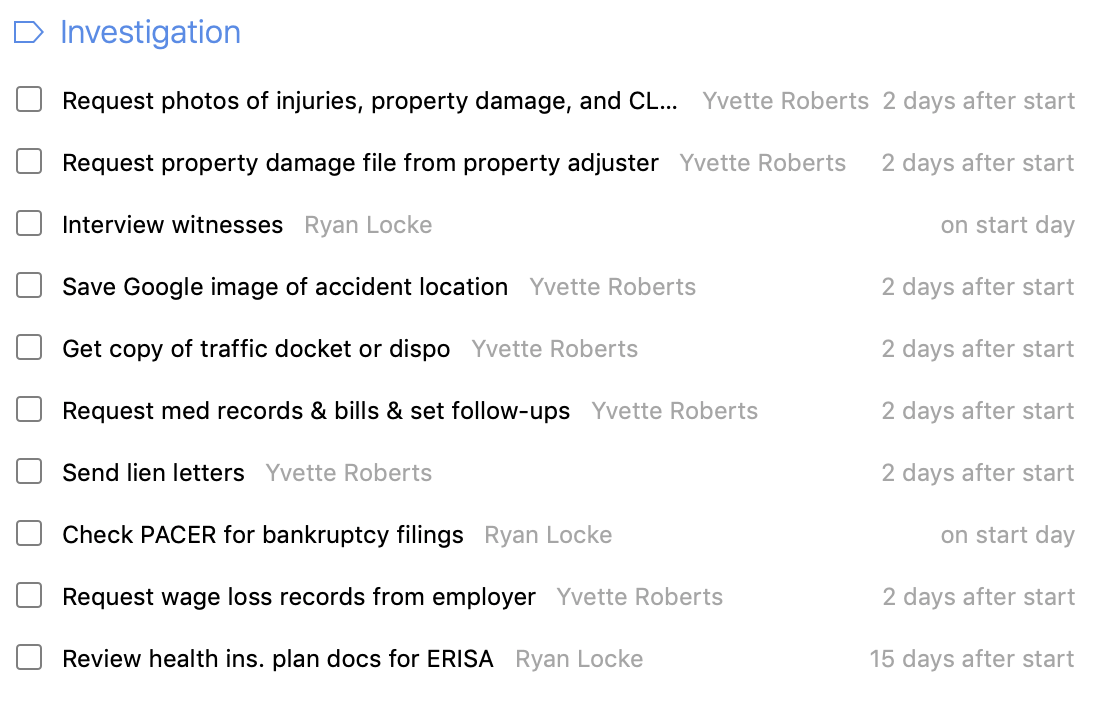Personal Injury workflows
We use a program called Daylite to manage the firm’s cases. Daylite includes a project management component that will automatically create tasks when a project moves from one stage to the next in a pipeline.
We use a different pipeline for each different type of case (direct appeal, habeas, personal injury auto, personal injury premises, etc).
Daylite will also let you create “activity sets,” which are essentially just groups of tasks that can be created within a project all at once. We use activity sets for things that we know will happen in a case, but we’re not sure exactly when. For example, in a litigation case we know the other side will send us discovery requests, but that could be with their answer or a month later, or a second set of request sometime even later. So when we receive discovery requests, we apply an activity set to the project that tasks us to send copies of the requests to the client, draft responses, review the responses with the client, etc. Each task’s due date is automatically set—sending the requests to the client happens on day 0, setting up a client meeting is due day 8, drafting is due day 15, and so on.
You can also have activity sets count backward from a date. One way we use “backwards” activity sets is for depositions. For example, once we have a date set for our client’s deposition, we apply the activity set and it sets tasks counting backwards: two days before confirm with opposing counsel and court reporter, seven days before prepare depo outline, ten days before order a court reporter, fifteen days before schedule a prep session with the client, etc.
You’ll notice that some pipeline stages are sparse. This is because (1) rarely use these stages—like we rarely file summary judgment motion in auto cases—or (2) there are external factors that will prompt us to do something, like receiving an email or something gets filed or (3) the tasks mostly involve Ryan, like preparing for trial. We’ve tried to strike a balance between having tasks for stuff that easily falls through the cracks or gets pushed off, but not overwhelm ourselves with hundreds of tasks. Ryan has a more extensive trial checklist that he uses to prepare (make sure tech works, visit courtroom if we haven’t been there before, confirm witness subpoenas, load up the car, buy granola bars, etc), but it doesn’t have to be in Daylite because once we at the final trial prep stage it’s the most important thing we’re doing. We’re more likely to forget to send an ERISA letter than forget to create a trial binder.
One area we don’t task out is client contact because I schedule time on my calendar to call clients (I like to talk to new clients once a week for the first month, and my paralegal will talk to them every few days as she sets up their case; we also talk to all clients at least once a month when we review all our cases).
I’d love to see examples of other lawyer workflows, and I’m happy to hear about how to improve mine. Send me an email (Ryan@TheLockeFirm.com) and if I like it I’ll post it here.
Here’s the pre-litigation workflow for PI cases:
Here’s our litigation workflow for auto cases:













